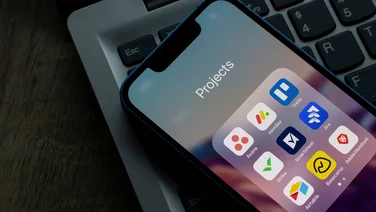To help us provide you with free impartial advice, we may earn a commission if you buy through links on our site. Learn more




Cyberlink might not be the first name people think of for photo management and editing, but this relative newcomer has been able to study the market for inspiration and opportunities. In practice, this boils down to liberal imitation of Adobe Lightroom’s raw-development tools alongside features that normally appear in layer-based editors, such as creative effects and the ability to cut out and combine objects. It’s a promising package for people who don’t want to have to fork out for two separate applications and constantly switch between them.
Tagging people is faster than before, thanks to face detection. It’s triggered manually per folder and means that Facebook uploads have tags already in place, although they don’t link through to friends’ Facebook accounts. Managing our photo library was generally pretty slick, but it sometimes kept us waiting for a few seconds. Thumbnails could be slow to appear, and options to filter by ratings or metadata are slow to access.

The new HDR Effect produces dramatic tones without the hassle of capturing multiple exposures
The new HDR Effect boosts the contrast relative to nearby pixels to give dramatic, punchy colours – and effect normally associated with combining bracketed photos. This version only works from a single photo but it was extremely effective at accentuating subtle details in clouds and undergrowth, and the controls are straightforward and responsive.
Chromatic aberration removal has also been added, but this fiddly process must be performed manually for each photo. We haven’t got the patience, especially when Lightroom does it automatically for both chromatic aberrations and lens distortions.
PhotoDirector 3 introduced a range of digital makeover tools such as Skin Smoother, Wrinkle Remover and Tooth Brush. Version 4 continues with a Body Shaper tool. It uses a combination of mesh warp and something akin to Photoshop’s Liquify tool to sculpt flabby, saggy bodies into Godlike physiques. As before, the moral implications of including this in consumer software are disastrous but we must admit that it’s well implemented. It’s fine for a bit of a giggle but anyone using it in all seriousness opens themselves up to ridicule.

Content Aware Removal often (but not always) works a treat
Also new is Content Aware Removal, which removes objects from photos by cloning material from elsewhere – it’s essentially the same as Photoshop Elements’ Content-Aware Fill. As with Adobe’s version, it struggled to reconstruct manmade objects convincingly but proved extremely effective for less structured textures.
As with most of the tools under PhotoDirector’s Edit tab, Content Aware Removal and Body Shaper are destructive processes, so it’s not possible to go back and readjust raw-processing settings afterwards. However, considering that this kind of editing is otherwise only available in destructive editors, it’s a fair compromise.

Dazzle your online friends with the Body Shaper tool, bury those feelings of self-loathing deep inside your heart and never leave the house again
PhotoDirector 4 is heading towards a favourable review, but there are other changes that we’re less happy about. The Tone controls have been updated, with the old and new versions bearing uncanny resembles to the equivalent controls in Adobe Lightroom. However, while Lightroom takes files from the old to the new processing engine one by one and with the user’s permission, PhotoDirector 4 automatically updates the whole lot, and there’s no going back.

Some photos looked better under the new raw-processing engine, but this one is definitely worse
Some photos looked better under the new engine but some looked worse, and they all looked different. For us, this is unforgivable. We want to be able to return to our photos and find them exactly as we left them, not subtly altered – even improved – without our knowledge, and certainly not degraded. It’s a bit like getting home and discovering that someone has broken in and redecorated. Cyberlink has told us that a future patch will fix this problem, but for the time being you’re stuck with automatic conversion.
We also found PhotoDirector 4 to be a little unstable. We can forgive the occasional crash, but it also had problems converting our photo library database from version 3 to version 4, repeatedly crashing at the end of this lengthy process.
We hope that Cyberlink resolves these issues quickly, but regardless, our confidence in PhotoDirector is diminished. Choosing a non-destructive image editor means making a long-term commitment, as switching applications is much more burdensome than with destructive editors because the edits are tied into the software rather than written to the media files.
We need an editor we can trust to look after hundreds or even thousands of hours’ work. Based on this update, PhotoDirector doesn’t warrant this trust. We’ll be trying out the patch to see if it fixes the problems, but until then Adobe Photoshop Elements 11 is the better editor and Adobe Lightroom 4 the better organiser.
| Details | |
|---|---|
| Price | £80 |
| Details | www.cyberlink.com |
| Rating | ** |





